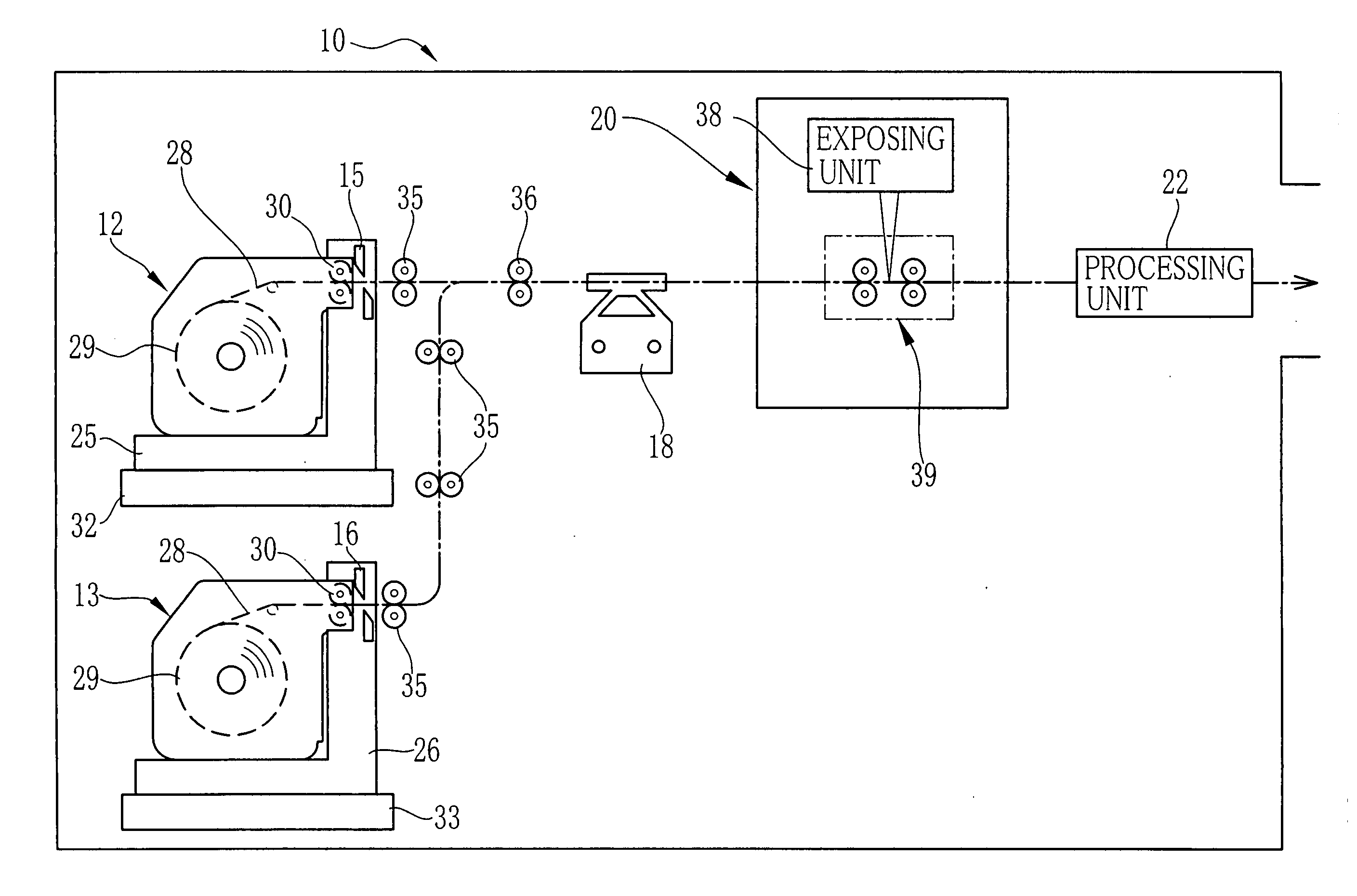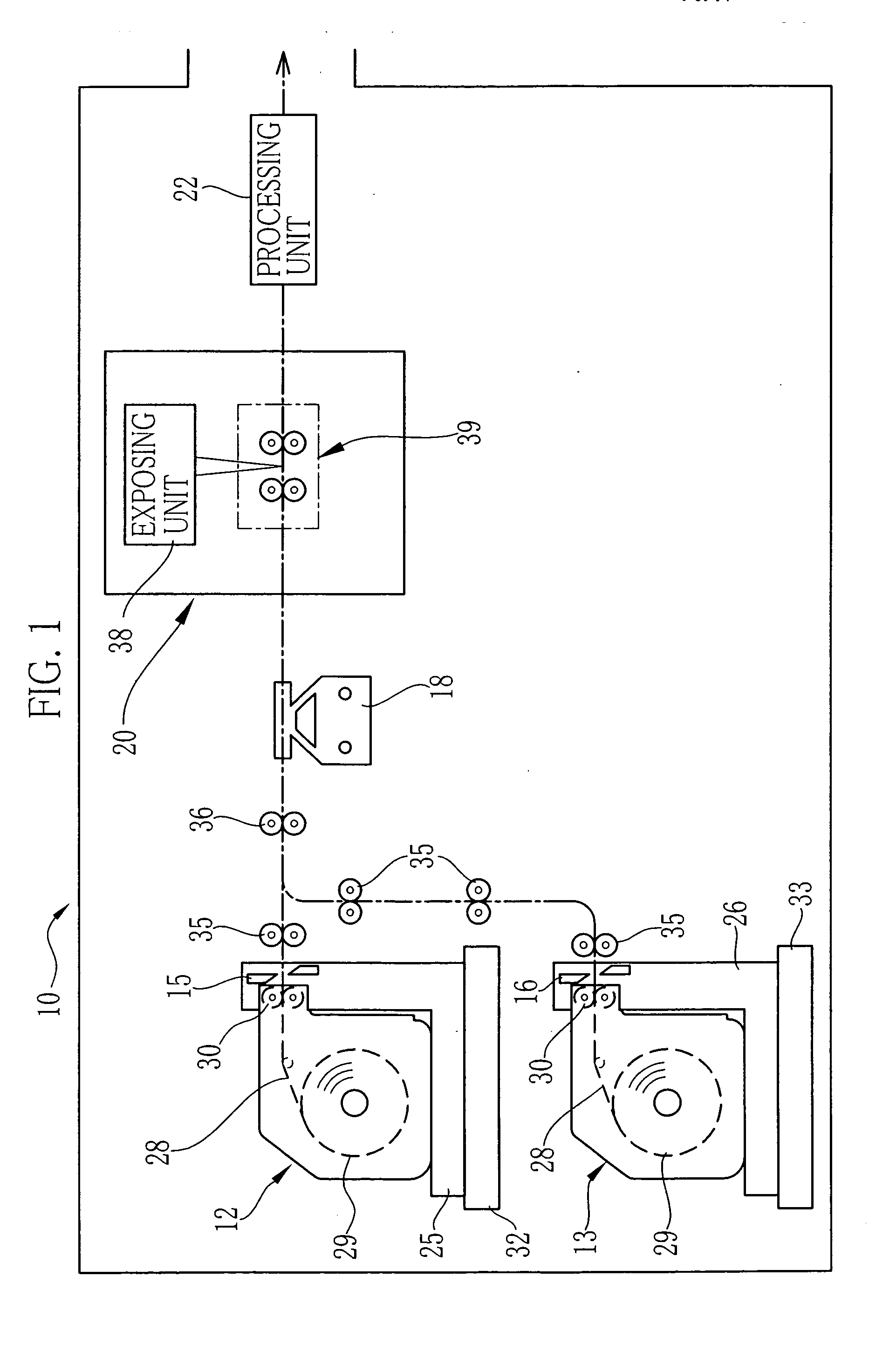Image recording apparatus and recording-material feeding method
a technology of image recording apparatus and recording material, which is applied in the direction of recording apparatus, printing equipment, instruments, etc., can solve the problems of complex mechanism, affecting the quality of photo prints, and causing load fluctuation, so as to prevent scanning unevenness, prevent scanning unevenness, and facilitate control
- Summary
- Abstract
- Description
- Claims
- Application Information
AI Technical Summary
Benefits of technology
Problems solved by technology
Method used
Image
Examples
Embodiment Construction
)
[0040]FIG. 1 is a schematic illustration showing a photographic printer 10 according to the present invention. In this printer 10, cut-sheet-shaped photosensitive materials of two rows are fed and simultaneously exposed. The exposed photosensitive material is outputted as a photo print. As shown in FIG. 1, the photographic printer 10 is constituted of magazines 12 and 13, cutters 15 and 16, a back-printing unit 18, an exposure section 20, a processing unit 22, and so forth.
[0041] The magazines 12 and 13 are set to magazine stands 25 and 26 vertically disposed in parallel. Each of the magazines 25 and 26 contains a recording-paper roll 29 formed by rolling a strip of a photosensitive recording paper 28 being as a photosensitive material. A paper roller pair 30 is disposed near a paper mouth of the respective magazines 12 and 13. Upon rotating the paper roller pair 30 by means of a motor, which is not shown, the recording paper 28 is drawn out of the recording-paper roll 29 and is a...
PUM
 Login to View More
Login to View More Abstract
Description
Claims
Application Information
 Login to View More
Login to View More - R&D
- Intellectual Property
- Life Sciences
- Materials
- Tech Scout
- Unparalleled Data Quality
- Higher Quality Content
- 60% Fewer Hallucinations
Browse by: Latest US Patents, China's latest patents, Technical Efficacy Thesaurus, Application Domain, Technology Topic, Popular Technical Reports.
© 2025 PatSnap. All rights reserved.Legal|Privacy policy|Modern Slavery Act Transparency Statement|Sitemap|About US| Contact US: help@patsnap.com



